Inspectable Items Group: Health and Safety
Notes
| Mold and/or Mildew Observed (Air Quality—Health and Safety) |
| Deficiency: You see mold or mildew or evidence of water infiltration or other moisture producing conditions. |
| Note: If the area has at least 1 square foot of mold or mildew, record it as a deficiency. |
With the introduction of the RAPID 4.0 definitions and software, this changed. Mold/Mildew is no longer cited unless there is at least one square foot area of mold/mildew.
All defects in this section - the general Health & Safety defects are all Level 3s - there is no such thing as a Level 1 or 2.
Note that there are two other Air Quality issues - find them here.
| Blocked/Unusable (Emergency/Fire Exits—Health and Safety) |
| Deficiency: The exit cannot be used or exit is limited because a door or window is nailed shut, a lock is broken, panic hardware is chained, debris, storage or other conditions. |
The application in reality is not.
The door one uses to enter the room is also the primary exit. If there is a another door or at least one operable window, this would be the secondary exit.
As long as the primary egress and at least one secondary exit is usable, it does not matter that a third or fourth exit is blocked - we only need to have two exits.
If either of the two required exits is obstructed - blocked by furniture or other stored items, locked from the outside, fitted with a double cylinder lock or padlock hasp that could be locked, or screwed or nailed shut - then it is a blocked exit.
If the only potential exit window has a broken balance - it doesn't stay open on its own - this is also a blocked exit.
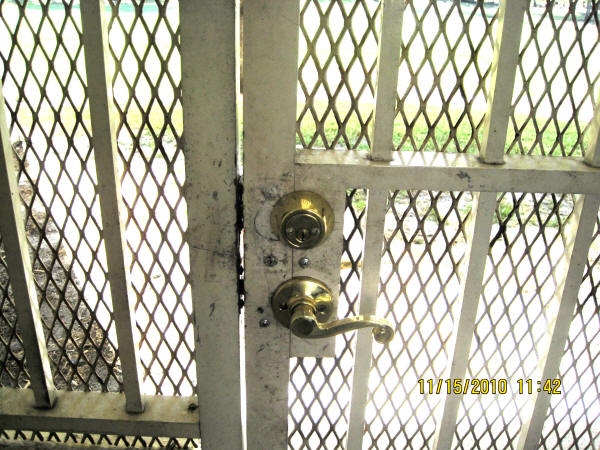
A double cylinder lock is okay on a Common Area door that does not serve as an exit from any Unit.
Some of the most "frequently asked questions" in our live classes and conversations with clients involved how to deal with resident possession blocking bedroom windows.
One is, "Is it acceptable if I just pull the tall headboard 18 inches from the window so you can squeeze behind it to get to the window?"
Everyone seems to be looking for a quick and easy solution to the problem of being cited for this high scoring defect because of the way residents block their own windows and doors.
Unfortunately, there is no truly easy answer - but there is one extremely effective trick that works for some properties: appealing blocked egress issues. This does not work for all properties however.
In properties where local code actually requires each room to be provided with two means of egress, the best policy is to prohibit blocking doors and windows, to include this prohibition in the lease, and to enforce this prohibition very strictly. It should be the kind of serious lease violation that results in eviction - it puts the lives of the resident, their family, and possibly others in the building in danger.
In properties where particular areas are NOT required to provide two means of egress, the property should simply allow the defect to be cited, and should then APPEAL IT. The appeal should be registered as a "Carry Over Data Base Adjustment." A Carry Over becomes part of the record, and the defect is automatically deleted from future inspections if cited.
If property management is truly planning well, the appeal need not wait until the deficiency has been cited. The "Pre Appeal" or "Pre Data Base Adjustment" allows us to register a fact that can affect the property's REAC score in advance.
Example: A licensed architect signs a letter stating that the apartments in the building are only required to have one means of egress which is satisfied by the primary entry/exit door, and that the bedroom windows are therefore not required by code or regulation to serve as a secondary means of egress. You file a Pre Data Base Adjustment asking REAC to enter this information into their data base, and to automatically adjust any defects that are cited for blocked windows in bedrooms.
WARNING: NEVER ASSUME your property is exempt from the two exits requirement! You MUST consult an architect, code expert,or fire marshal before allowing potential blocked exit issues to persist.
The problem with this plan is:
You don't know
what fire code requires for your property do you?
Perhaps it is time to find out!
| Missing Exit Signs (Emergency/Fire Exits—Health and Safety) |
| Deficiency: |
| —Exit signs that clearly identify all emergency exits are missing. |
| -OR- |
| —There is no adjacent or other internal illumination in operation on or near the sign. |
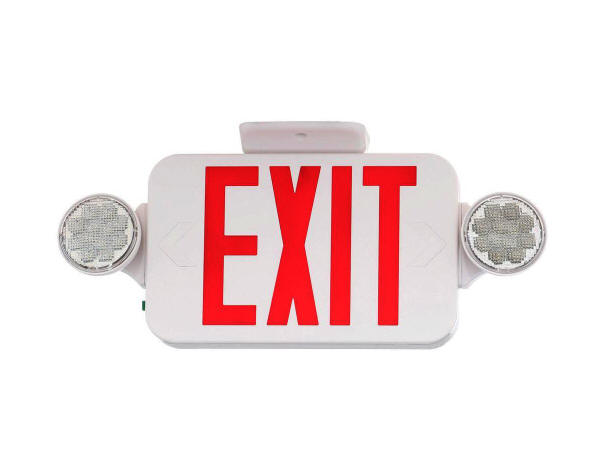
Where Exit Signs exist, there must be adequate lighting for occupants to see them in an emergency.
Some signs depend on ambient lighting nearby, other exit signs have internal lighting.
Where the exit signs have internal lighting, they also often have a battery back-up system built in.
Exit signs that identify emergency exits are distinct from Auxiliary Lighting that illuminates public areas during a power outage.
| Flammable/Combustible Materials—Improperly Stored (Health and Safety) |
| Any substance that is either known to be combustible or flammable or is stored in a container identifying it as such. |
| Deficiency: Flammable materials or combustible materials are improperly stored near a heat or electrical source, causing the potential risk of fire or explosion. |
| Note: Flammable or combustible materials may include, but are not limited to, gasoline, paint thinners, kerosene, propane, paper, boxes, etc. |
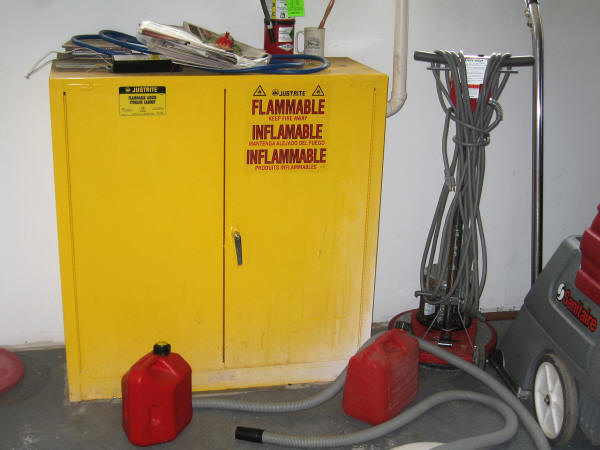
| Indoors (Garbage and Debris—Health and Safety) |
| Deficiency: |
| —Too much garbage has gathered, more than the planned storage capacity. |
| -OR- |
| —Garbage has gathered in an area that is not sanctioned for staging or storing garbage or debris. |
| Note: This does not include garbage and debris improperly stored outside. For this deficiency, see “Outdoors (Garbage and Debris—Health and Safety).” |
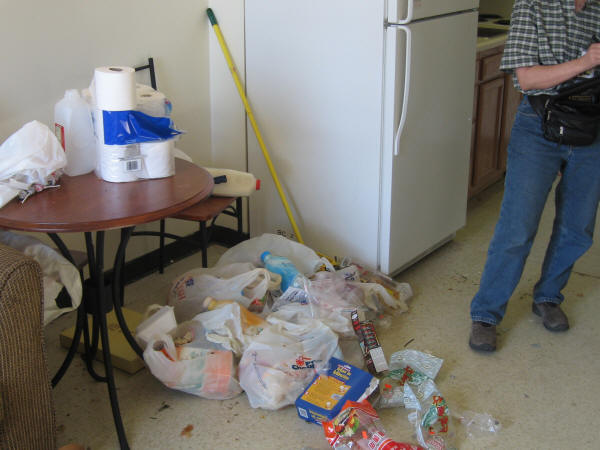
| Outdoors (Garbage and Debris—Health and Safety) |
| Deficiency: |
| —Too much garbage has gathered; more than the planned storage capacity. |
| -OR- |
| —Garbage has gathered in an area not sanctioned for staging or storing garbage or debris. |
| Note: This does not include garbage improperly stored indoors. For this deficiency, see “Indoors (Garbage and Debris—Health and Safety).” |
| Sharp Edges (Hazards—Health and Safety) |
| Deficiency: You see any physical defect that could cause cutting or breaking human skin or other bodily harm, generally in commonly used or traveled areas. |
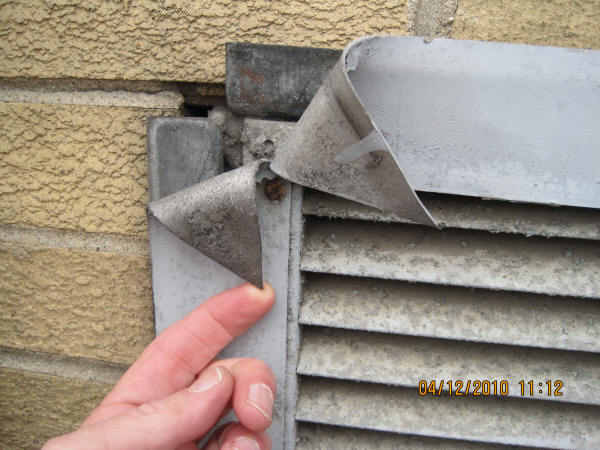
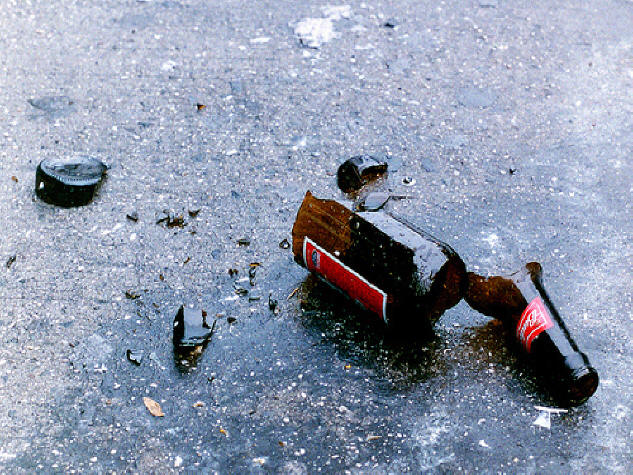
| Tripping (Hazards—Health and Safety) |
| Deficiency: You see any physical defect that poses a tripping risk, generally in walkways or other traveled areas. Typically, the defect must present at least a three-quarter inch deviation. |
| Note: This does not include tripping hazards from elevators that do not level properly. For this deficiency, see “Elevator Tripping (Health and Safety).” |
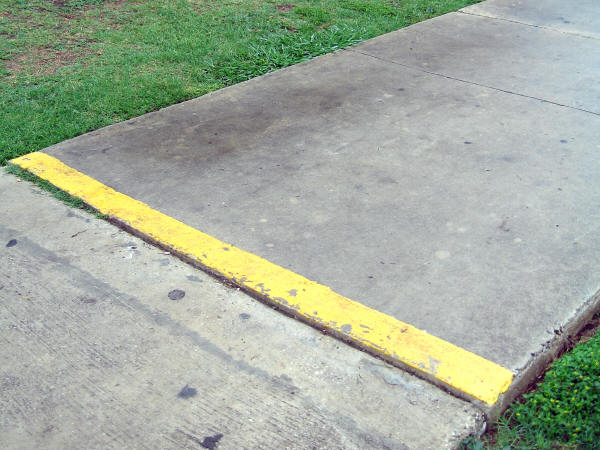
| Other Hazards (Hazards—Health and Safety) |
| Note:“Other” includes hazards that are not specifically defined elsewhere. |
| Insects (Infestation—Health and Safety) |
| Deficiency: You see evidence of infestation of insects, including roaches and ants, throughout a unit or room, especially in food preparation and storage areas. |
| Note: |
| 1. This does not include infestation from rats/mice. For this deficiency, see “Rats/Mice/Vermin (Infestation—Health and Safety).” |
| 2. If you see baits, traps, and sticky boards that show no presence of insects, do not record this as a deficiency. |
| Rats/Mice/Vermin (Infestation—Health and Safety) |
| Deficiency: You see evidence of rats or mice sightings, rat or mouse holes, or droppings. |
| Note: |
| 1. This does not include infestation from insects. For this deficiency, see “Insects (Infestation—Health and Safety).” |
| 2. If you see baits, traps, or sticky boards that show no presence of vermin, do not record this as a deficiency. |
| Health and Safety Inspectable Items |
| Items to inspect for “Health and Safety” are as follows: |
| Air Quality |
| Electrical Hazards - See Electrical Defects for more information |
| Elevator |
| Emergency/Fire Exits |
| Flammable Materials |
| Garbage and Debris |
| Hazards |
| Infestation |
| Air Quality (Health and Safety) |
| Indoor/outdoor spaces must be free from high levels of sewer gas, fuel gas, mold, mildew or other harmful pollutants. Indoors must have adequate ventilation. |
| The following deficiencies can be noted: |
| Mold and/or Mildew Observed |
| Propane/Natural Gas/Methane Gas Detected |
| Sewer Odor Detected |
| Mold and/or Mildew Observed (Air Quality—Health and Safety) |
| Deficiency: You see mold or mildew or evidence of water infiltration or other moisture producing conditions. |
| Note: If the area has at least 1 square foot of mold or mildew, record it as a deficiency. |
| Propane/Natural Gas/Methane Gas Detected (Air Quality—Health and Safety) |
| Deficiency: You detect strong propane, natural gas, or methane gas odors that could: |
| —Pose a risk of explosion/fire. |
| —Pose a health risk if inhaled. |
| Sewer Odor Detected (Air Quality—Health and Safety) |
| Deficiency: You detect sewer odors. |
| Electrical Hazards (Health and Safety) |
| Any hazard that poses a risk of electrical fires, electrocution or spark/explosion. |
| The following deficiencies can be noted: |
| Exposed Wires/Open Panels |
| Water Leaks On or Near Electrical Equipment |
|
See Electrical Defects for more information Also see "Non-Industry Standard Repairs" for Electrical Issues |
| Exposed Wires/Open Panels (Electrical Hazards—Health and Safety) |
| Deficiency: You see exposed bare wires or openings in electrical panels. |
| Note: |
| 1. If the accompanying property representative has identified abandoned wiring, capped wires do not pose a risk and should not be recorded as a deficiency. They must be enclosed in a junction box as defined in Note 2, below. |
| 2. If the capped wires are not properly enclosed in a junction box, record as a deficiency. |
| Water Leaks On or Near Electrical Equipment (Electrical Hazards—Health and Safety) |
| Deficiency: You see water leaking, puddling or ponding on or immediately near any electrical apparatus. This could pose a risk of fire, electrocution or explosion. |
| Elevator—Tripping (Health and Safety) |
| Vertical conveyance system for moving personnel, equipment, materials, household goods, etc. |
| Deficiency: An elevator is misaligned with the floor by more than 3/4 inch. The elevator does not level as it should, which causes a tripping hazard. |
| Emergency/Fire Exits (Health and Safety) |
| All buildings must have acceptable fire exits that are also properly marked and operational. This includes fire towers, stairway access doors and external exits. These can include operable windows on the lower floors with easy access to the ground or a back door opening onto a porch with a stairway leading to the ground. |
| Note: This does not apply to individual units. |
| The following deficiencies can be noted: |
| Blocked/Unusable (Emergency/Fire Exits) |
| Missing Exit Signs |
| Blocked/Unusable (Emergency/Fire Exits—Health and Safety) |
| Deficiency: The exit cannot be used or exit is limited because a door or window is nailed shut, a lock is broken, panic hardware is chained, debris, storage or other conditions. |
| Missing Exit Signs (Emergency/Fire Exits—Health and Safety) |
| Deficiency: |
| —Exit signs that clearly identify all emergency exits are missing. |
| -OR- |
| —There is no adjacent or other internal illumination in operation on or near the sign. |
| Flammable/Combustible Materials—Improperly Stored (Health and Safety) |
| Any substance that is either known to be combustible or flammable or is stored in a container identifying it as such. |
| Deficiency: Flammable materials or combustible materials are improperly stored near a heat or electrical source, causing the potential risk of fire or explosion. |
| Note: Flammable or combustible materials may include, but are not limited to, gasoline, paint thinners, kerosene, propane, paper, boxes, etc. |
| Garbage and Debris (Health and Safety) |
| Accumulation of garbage and debris exceeding the capacity of the storage area or not stored in an area sanctioned for such use. |
| The following deficiencies can be noted: |
| Indoors |
| Outdoors |
| Indoors (Garbage and Debris—Health and Safety) |
| Deficiency: |
| —Too much garbage has gathered, more than the planned storage capacity. |
| -OR- |
| —Garbage has gathered in an area that is not sanctioned for staging or storing garbage or debris. |
| Note: This does not include garbage and debris improperly stored outside. For this deficiency, see “Outdoors (Garbage and Debris—Health and Safety).” |
| Outdoors (Garbage and Debris—Health and Safety) |
| Deficiency: |
| —Too much garbage has gathered; more than the planned storage capacity. |
| -OR- |
| —Garbage has gathered in an area not sanctioned for staging or storing garbage or debris. |
| Note: This does not include garbage improperly stored indoors. For this deficiency, see “Indoors (Garbage and Debris—Health and Safety).” |
| Hazards (Health and Safety) |
| Physical hazards that pose risk of bodily injury. |
| The following deficiencies can be noted: |
| Sharp Edges |
| Tripping |
| Other Hazards |
| Sharp Edges (Hazards—Health and Safety) |
| Deficiency: You see any physical defect that could cause cutting or breaking human skin or other bodily harm, generally in commonly used or traveled areas. |
| Tripping (Hazards—Health and Safety) |
| Deficiency: You see any physical defect that poses a tripping risk, generally in walkways or other traveled areas. Typically, the defect must present at least a three-quarter inch deviation. |
| Note: This does not include tripping hazards from elevators that do not level properly. For this deficiency, see “Elevator Tripping (Health and Safety).” |
| Other Hazards (Hazards—Health and Safety) |
| Note:“Other” includes hazards that are not specifically defined elsewhere. |
| Infestation (Health and Safety) |
| Presence of rats, or severe infestation by mice or insects such as roaches or termites. |
| The following deficiencies can be noted: |
| Insects |
| Rats/Mice/Vermin |
| Insects (Infestation—Health and Safety) |
| Deficiency: You see evidence of infestation of insects, including roaches and ants, throughout a unit or room, especially in food preparation and storage areas. |
| Note: |
| 1. This does not include infestation from rats/mice. For this deficiency, see “Rats/Mice/Vermin (Infestation—Health and Safety).” |
| 2. If you see baits, traps, and sticky boards that show no presence of insects, do not record this as a deficiency. |
| Rats/Mice/Vermin (Infestation—Health and Safety) |
| Deficiency: You see evidence of rats or mice sightings, rat or mouse holes, or droppings. |
| Note: |
| 1. This does not include infestation from insects. For this deficiency, see “Insects (Infestation—Health and Safety).” |
| 2. If you see baits, traps, or sticky boards that show no presence of vermin, do not record this as a deficiency. |
When noting the location of a H&S defect, the inspector should pay close attention to the software prompts to
avoid recording the defect in the wrong location.
A. Emergency/Fire Exits
1. On the third and lower floors:
a. The Blocked/Unusable deficiency is applicable to blocked or unusable emergency/fire exits on these floor areas for room, unit, or building. If designed, these floors must have a minimum of two independent unobstructed exits, one of which must be a door (primary). If not designed for two exits, then only one will be evaluated.
b. If the only window in a floor area for a room, unit or building, is blocked by a window air conditioner, furniture, an inoperable window sash, or any other obstruction, and the area has only one exit door, the inspector must record a Blocked/Unusable deficiency.
c. If a floor area has an obstructed window but at least one other window that is unobstructed or a second unobstructed door, there is no blocked egress.
2. On the fourth and higher floors:
a. All floor areas for a room, unit or building on the fourth or higher must have at least one unobstructed exit door as the primary means of egress. If a floor area is designed with a window or door that leads to a fire escape, this must be considered a second means of egress and must be evaluated as a potential blocked egress.
3. The note in the Blocked/Unusable definition that states, “This does not apply to individual units,” must be disregarded.
4. All blockages that limit a person’s ability to exit a room in case of emergency are a deficiency. Professional common sense and inspector knowledge are to be applied.
5. Evaluating unit closets for blocked egress:
a. A closet door is considered primary egress from the closet area. Any lock, chain, damaged hardware or other device that prevents egress from a floor area, which includes all doors on all floors, is considered a blocked egress. Any blockage that limits a person’s ability to exit a room in the event of an emergency is considered a deficiency. Professional common sense and inspector knowledge are to be applied.
b. A padlock or any other locking mechanism used by the property to secure the unit mechanical closet will not be recorded as a blocked egress. Additionally, similar locking mechanisms, whether installed by the resident or property, to secure the unit exterior storage closet or shed will not be recorded as a blocked egress.
6. In the comment field for the deficiency, the inspector must explicitly state why the obstruction prevents egress. If a resident could easily climb over or otherwise traverse the furniture or obstruction, there is no deficiency. Keep in mind the property’s resident population (e.g., family, elderly, handicapped), when making a determination of the applicability of this defect.
B. Common Area Doors – Blocked Fire Exits with Double Keyed Deadbolts
1. Double-sided keyed deadbolt locks in Common Areas are an EH&S deficiency when they serve as the entrance or exit points for residential units into hallways, lobbies, stairways, and similar areas. This does not apply to common areas in residential buildings that are not the intended egress for residential units such as laundry rooms, shops, and offices.
C. Unit Doors – Blocked Fire Exits with Double Keyed Deadbolts
1. Double-sided keyed knob locks and deadbolts, when observed on doors that serve as one of the two required means of egress from a unit floor area, are a Health & Safety, Emergency/Fire Exits, Blocked/Unusable deficiency. This applies to all doors on all floors that serve as a main or primary means of exit. A primary exit door is the main means of egress from a floor area such as a bedroom, kitchen, or living room.
D. Flammable Materials
1. Items that must be considered when evaluating improperly stored flammable materials:
a. If an inspector observes flammable materials still in the original container (such as, but not limited to: hair spray, other types of aerosol cans, finger nail polish remover, butane lighter fluid, charcoal lighter fluid, paint thinner, etc.), and they are being stored in a safe place (such as under a kitchen sink, hall closet, etc.), then an inspector should not record improperly stored flammable materials.
b. If the above items are being stored in close proximity to an open flame or heat source (such as, but not limited to: a gas hot water heater, a gas HVAC unit, electric heaters, etc.), then improperly stored flammable materials should be recorded.
c. If easily combustible items (such as, but not limited to: paper, plastics, boxes, clothes, etc.) are being stored in close proximity to an open flame or heat source, then improperly stored flammable materials should be recorded.
d. Lawnmower/gasoline that is properly stored in a garage is not recorded as an H&S deficiency.
e. If a unit has a storage room that is only accessible from outside of the unit (and not accessible from within the unit), then flammable materials such as gasoline, propane, and kerosene can be stored in that storage room without it being improperly stored flammable materials.
f. Propane tanks or gas power equipment stored outside of a building, but in close proximity to the building should not be recorded as improperly stored flammable materials.
Effective date: May 23, 2016
• A window AC unit is installed in the only window in a bedroom, but it is not secured to the window frame or sash. Is this a defect? Yes. It is recorded as a blocked egress regardless if it is secured to the window or not.
• Can a broken child’s toy with a sharp edge be recorded as a defect? Yes. Hazard - other. (E.g., Resident owned personal property that’s broken. See Comp. Bulletin.)
• Below is a photo of a hasp lock, this lock is on the unit entry door. Is it a blocked egress? It is a blocked egress. (All blockages that limit a person’s ability to exit a room in case of emergency are a deficiency. Unlike a thumb turn deadbolt this has the potential to be pad locked.) Professional common sense and inspector knowledge are to be applied.

• How do you record the defect when bed bugs are observed in a unit? The inspector will record as an “H&S – Hazards Other “ defect, and make the comment that bed bugs exist in the unit. Currently, you will not record bed bugs as an “H&S- Infestation” defect.
Unit: Kitchen Items-
• The range hood exhaust fan is missing the filter. Is it a defect? Yes, it is a defect. (Inoperable –L3)
(Editor's note: Not sharp edges)
• Is aluminum foil in the oven or on the stove top a defect? No defect
(Editor's note: Not flammable materials)
• Is a pizza box, plastic bags, etc., stored in the oven a defect? Yes. It is recorded as Hazards- Other.
(Editor's note: Not flammable materials)